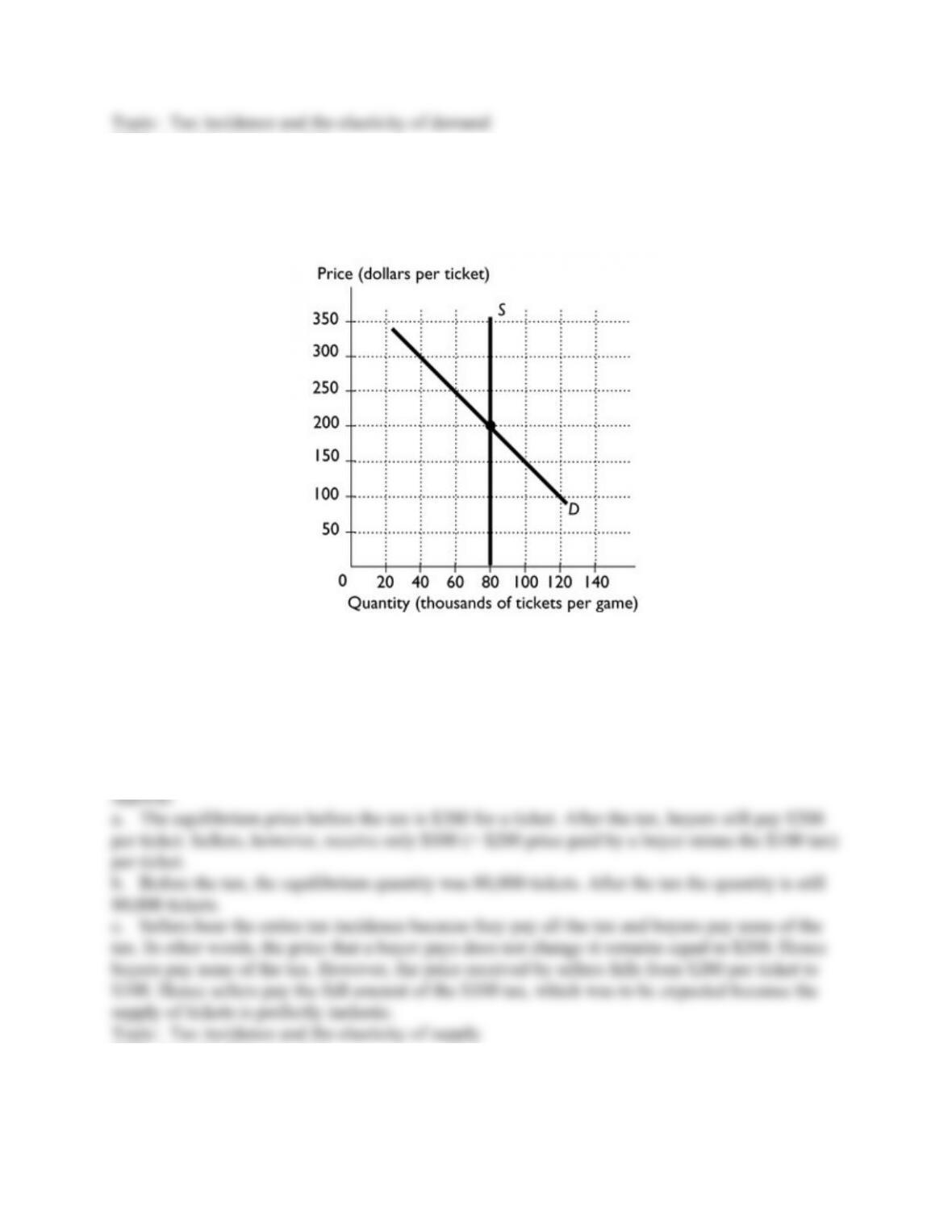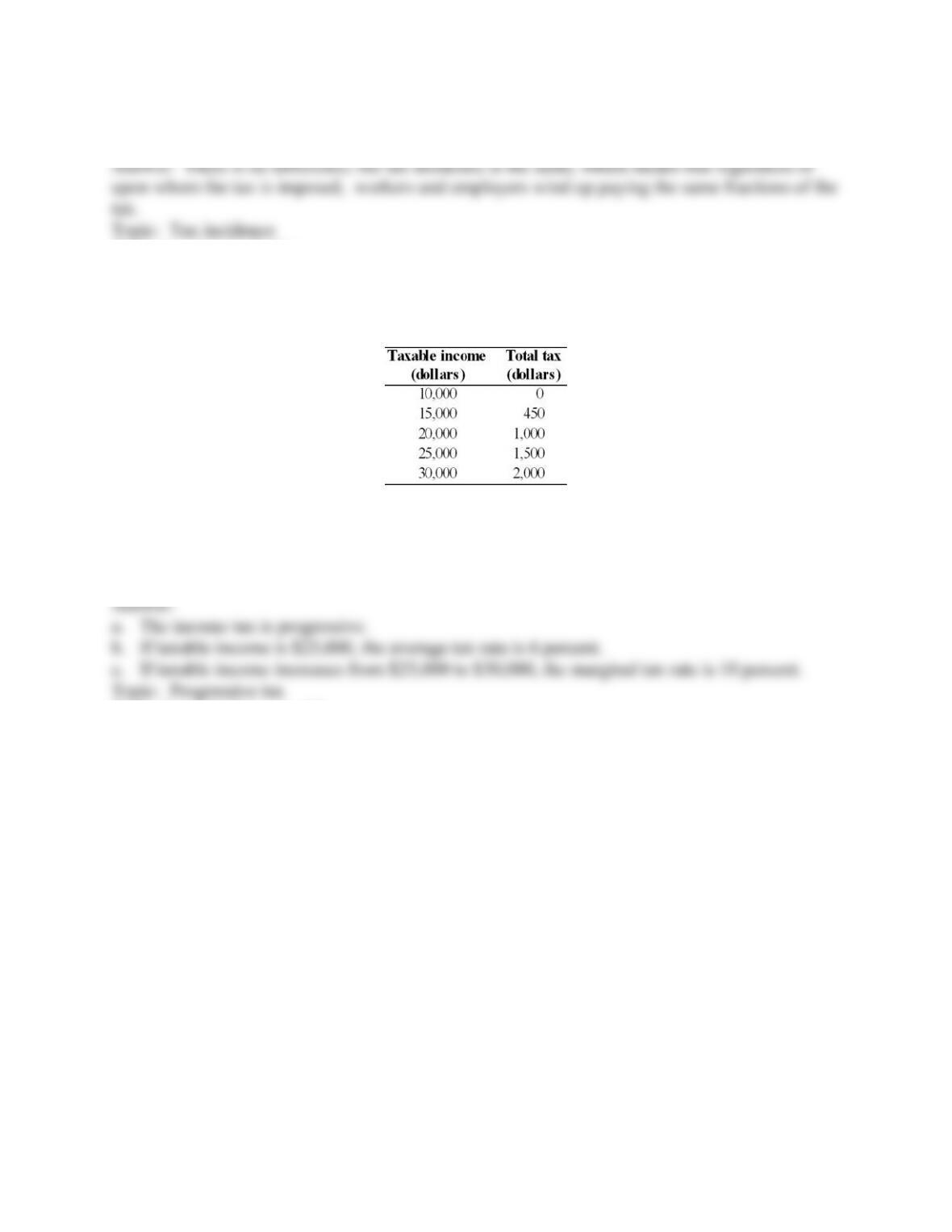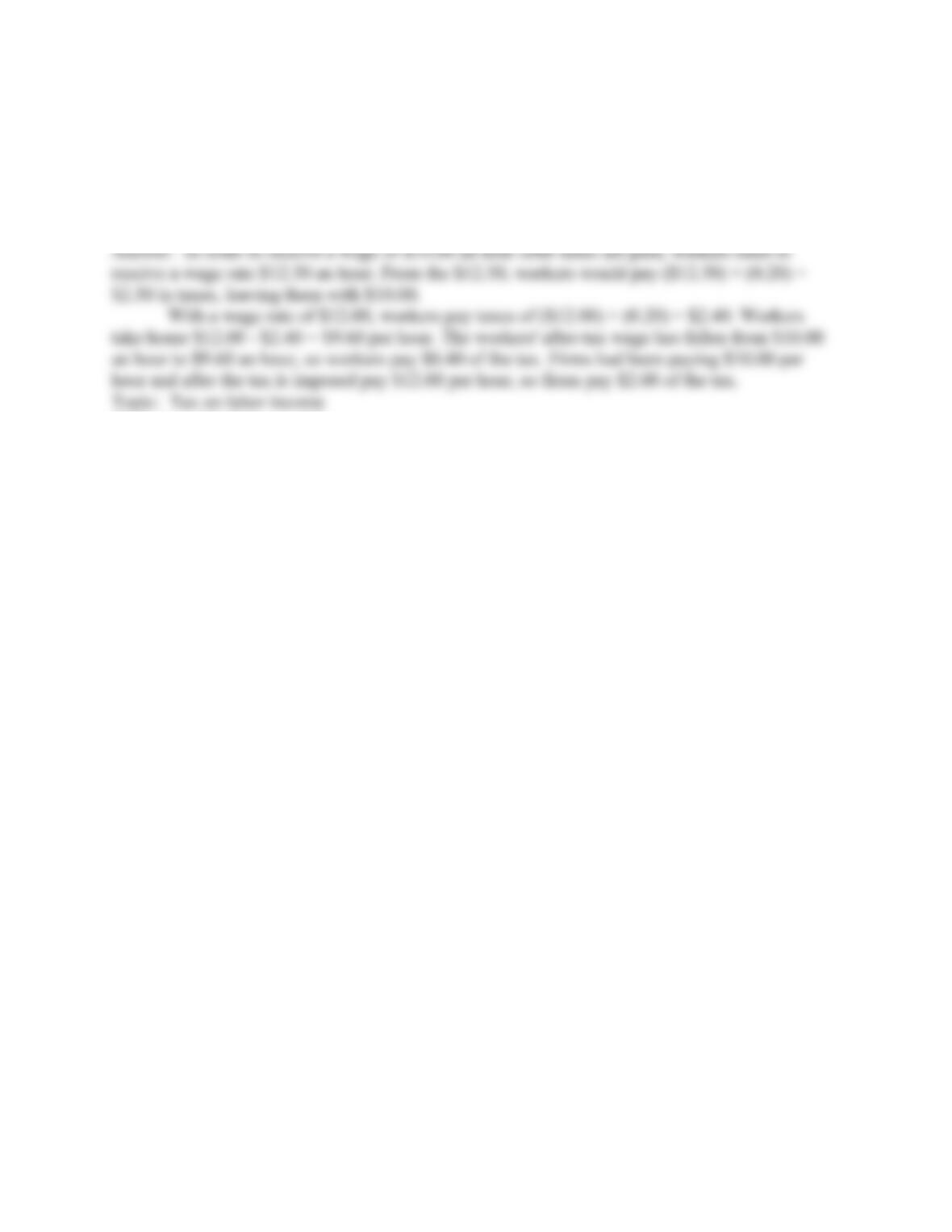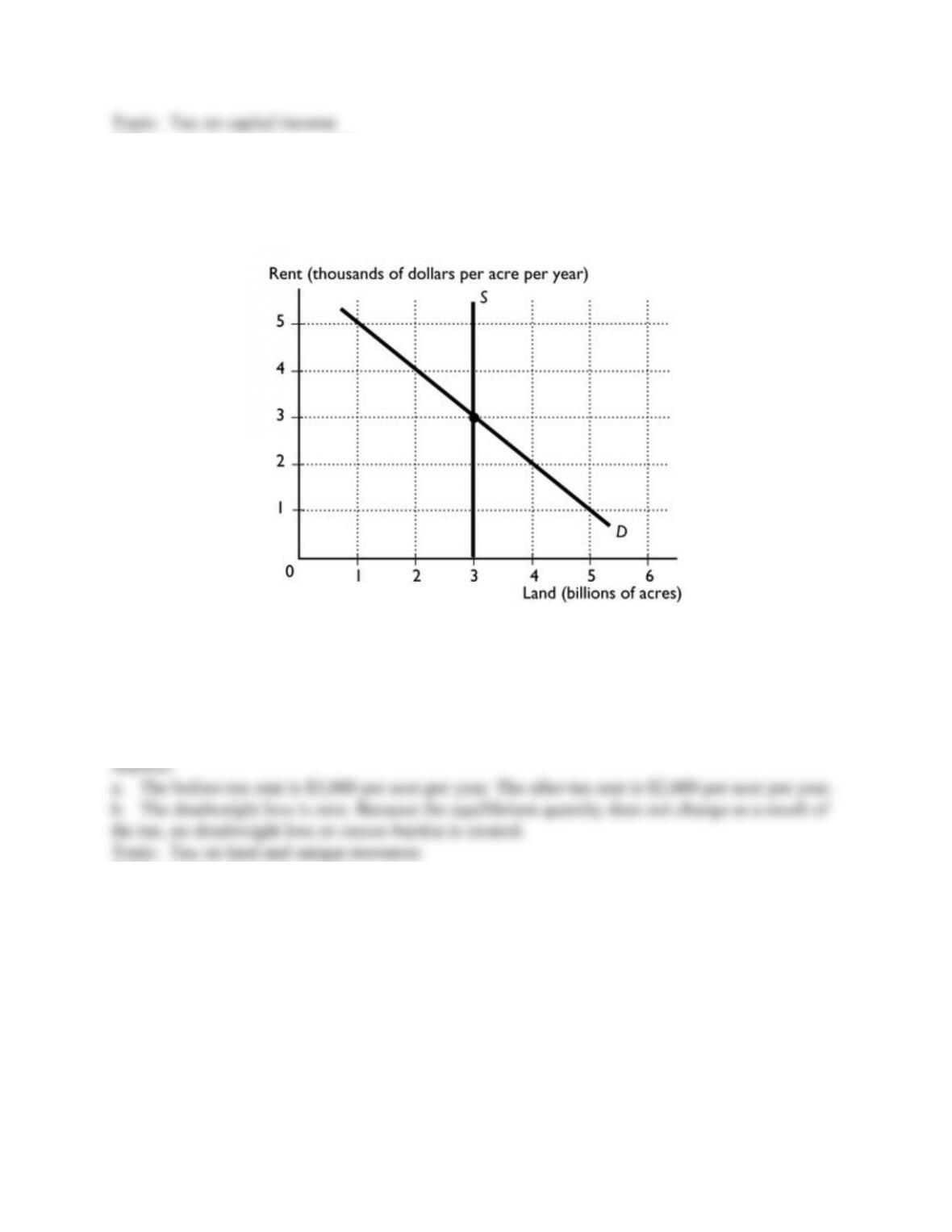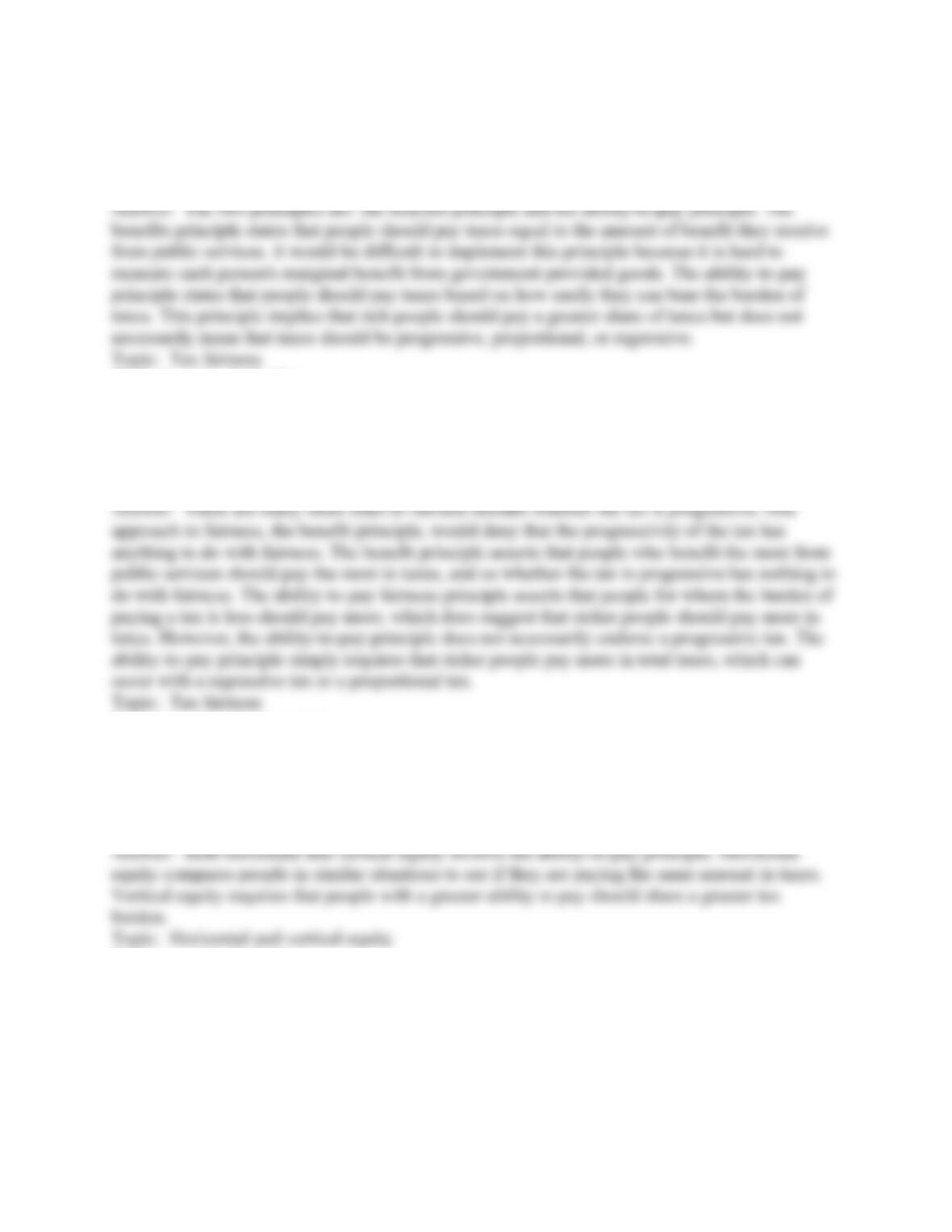
101
Copyright © 2011 Pearson Education, Inc.
8.7 Essay: Income Tax and Social Security Tax
1) "In the United States, more tax revenue is collected through Social Security taxes than through
property taxes." Is the previous statement correct or incorrect?
Skill: Level 2: Using definitions
Section: Checkpoint 8.2
Author: SB
AACSB: Reflective thinking
2) Ali earns $20,000 and pays $2,000 in taxes; Maria earns $40,000 and pays $4,000 in taxes. Is
this tax progressive, regressive, or proportional?
Skill: Level 2: Using definitions
Section: Checkpoint 8.2
Author: SA
AACSB: Analytical reasoning
3) "For the U.S. personal income tax, the average tax rate is greater than the marginal tax rate."
Is the previous statement correct or incorrect?
Skill: Level 2: Using definitions
Section: Checkpoint 8.2
Author: SB
AACSB: Reflective thinking
4) What is the marginal tax rate? Average tax rate? Can these rates ever differ?
Skill: Level 2: Using definitions
Section: Checkpoint 8.2
Author: SB
AACSB: Reflective thinking




